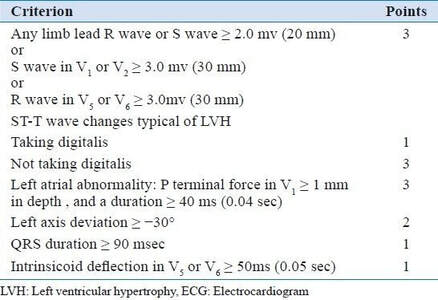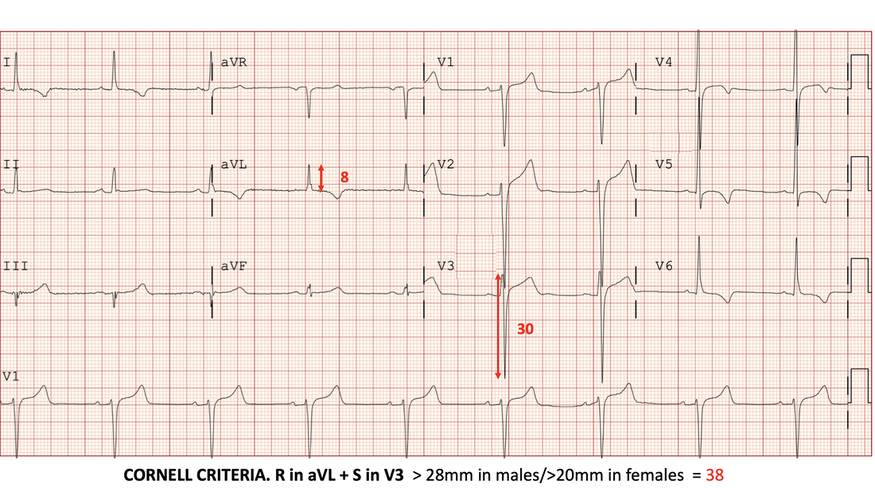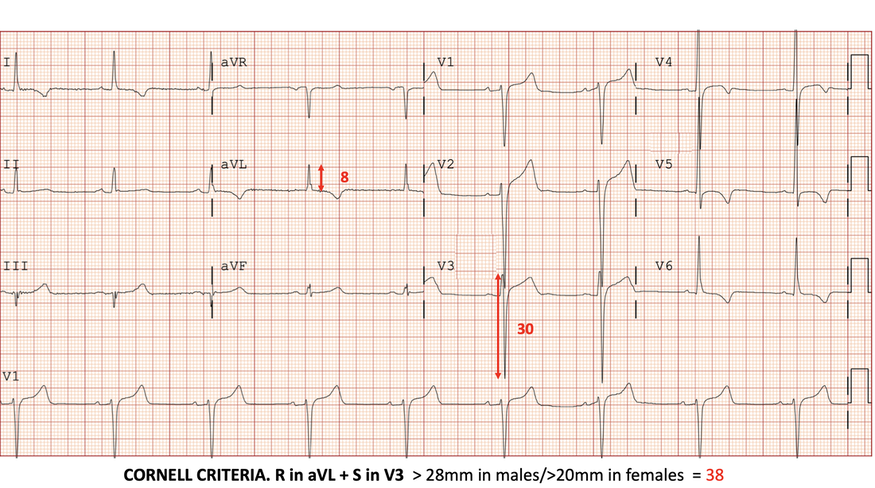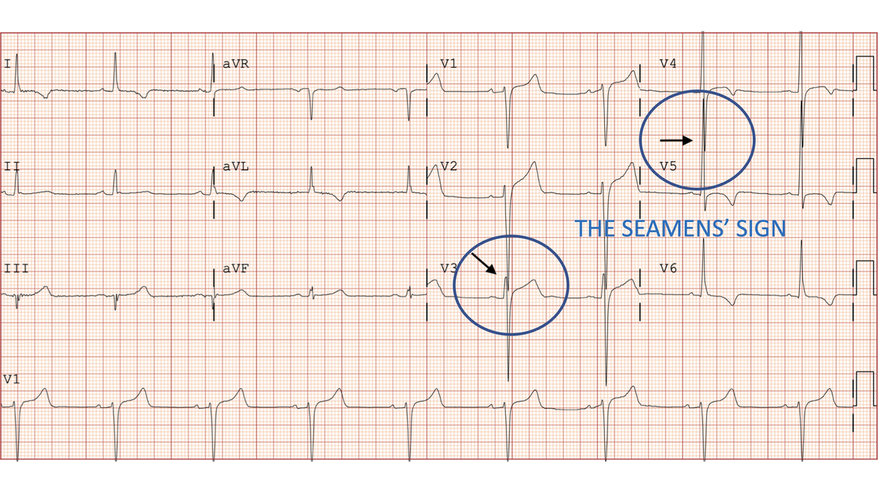Left ventricular Hypertrophy
We know that Left Ventricular Hypertrophy (LVH) when diagnosed on an ECG, is associated with a higher mortality and cardiovascular morbidity.
The gold standard for diagnosis is Cardiac Echocardiography, or ventricular mass measurements by MRI.
The ECG however can provide a helpful screening tool for patients, alerting us for the need for further investigations.
The current methods are based on adding QRS voltages and can be a little tricky.
Current methods available:
Causes of LVH
The gold standard for diagnosis is Cardiac Echocardiography, or ventricular mass measurements by MRI.
The ECG however can provide a helpful screening tool for patients, alerting us for the need for further investigations.
The current methods are based on adding QRS voltages and can be a little tricky.
Current methods available:
Causes of LVH
- Hypertension is by far the most common cause
- Aortic valve disease causing either regurgitation or stenosis
- Mitral regurgitation
- Hypertrophic cardiomyopathy
Current Criteria Used
CORNELL CRITERIA
R in aVL + S in V3
SOKOLOW-LYON CRITERIA
S in V1 + R in V5/6 > 3.5mV(35mm)
ROMHILT-ESTES POINT SCORE SYSTEM
R in aVL + S in V3
- >2mV(20mm) in females
- >2.8 mV(28mm) in males
SOKOLOW-LYON CRITERIA
S in V1 + R in V5/6 > 3.5mV(35mm)
ROMHILT-ESTES POINT SCORE SYSTEM
I usually use the Sokolow-Lyon Criteria as I find the Romhily-Estes, too complicated.
Is there an easier method?
The SEAMENS' SIGN
This is a new proposed sign from the recent literature(1).
The Seamens Sign is as follows:
If any of the QRS Complexes in the precordial leads in a 12 lead ECG, touch or cross another QRS complex, this is defined as LVH.
This was a retrospective chart review of 2184 patient records in a Quartenary Centre and looked at consecutive patients with an ECG and a trans thoracic echocardiogram, performed within 90 days of each other.
The Primary Endpoint was to determine if the Seamens' Sign was non inferior in confirming LVH compared to other criteria.
Conclusion
When compared to the Sokolow-Lyon criteria and the Cornell criteria for males, the Seamens' Sign was non-inferior in confirming LVH on an ECG.
This is a simple way to screen the ECG. Let's look at an example. This is an ECG with probable LVH.
We can apply the 3 criteria as follows:
This is a new proposed sign from the recent literature(1).
The Seamens Sign is as follows:
If any of the QRS Complexes in the precordial leads in a 12 lead ECG, touch or cross another QRS complex, this is defined as LVH.
This was a retrospective chart review of 2184 patient records in a Quartenary Centre and looked at consecutive patients with an ECG and a trans thoracic echocardiogram, performed within 90 days of each other.
The Primary Endpoint was to determine if the Seamens' Sign was non inferior in confirming LVH compared to other criteria.
Conclusion
When compared to the Sokolow-Lyon criteria and the Cornell criteria for males, the Seamens' Sign was non-inferior in confirming LVH on an ECG.
This is a simple way to screen the ECG. Let's look at an example. This is an ECG with probable LVH.
We can apply the 3 criteria as follows:
References
- Walker P et al. Seamens' Sign: a novel elctrocardiogram prediction tool fr left ventricular hypertrophy. Peer J May 31 2022. 10:e13548
- Surawicz B et al. Chou's Electrocardiography in Clinical Practice: Adult and Pediatric. Sixth edition Saunders Elsevier




